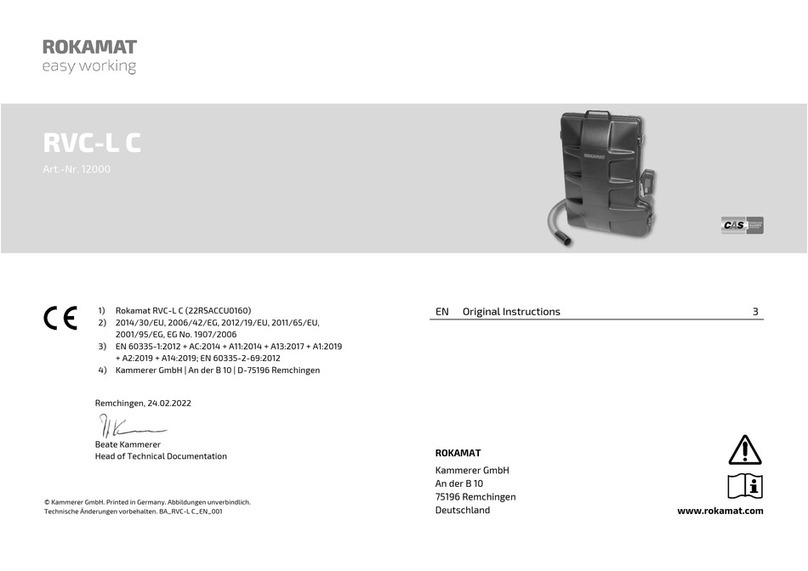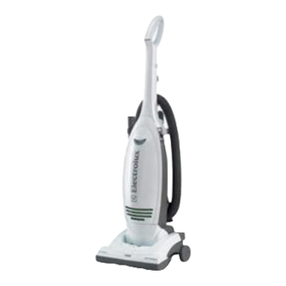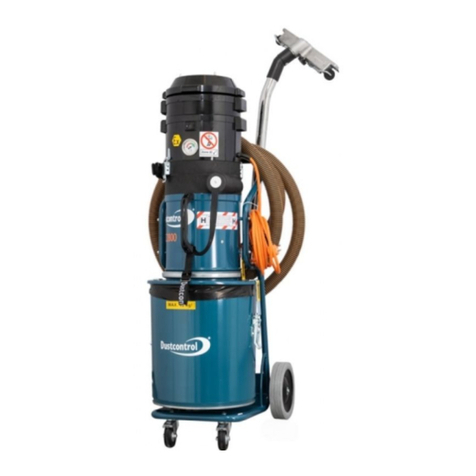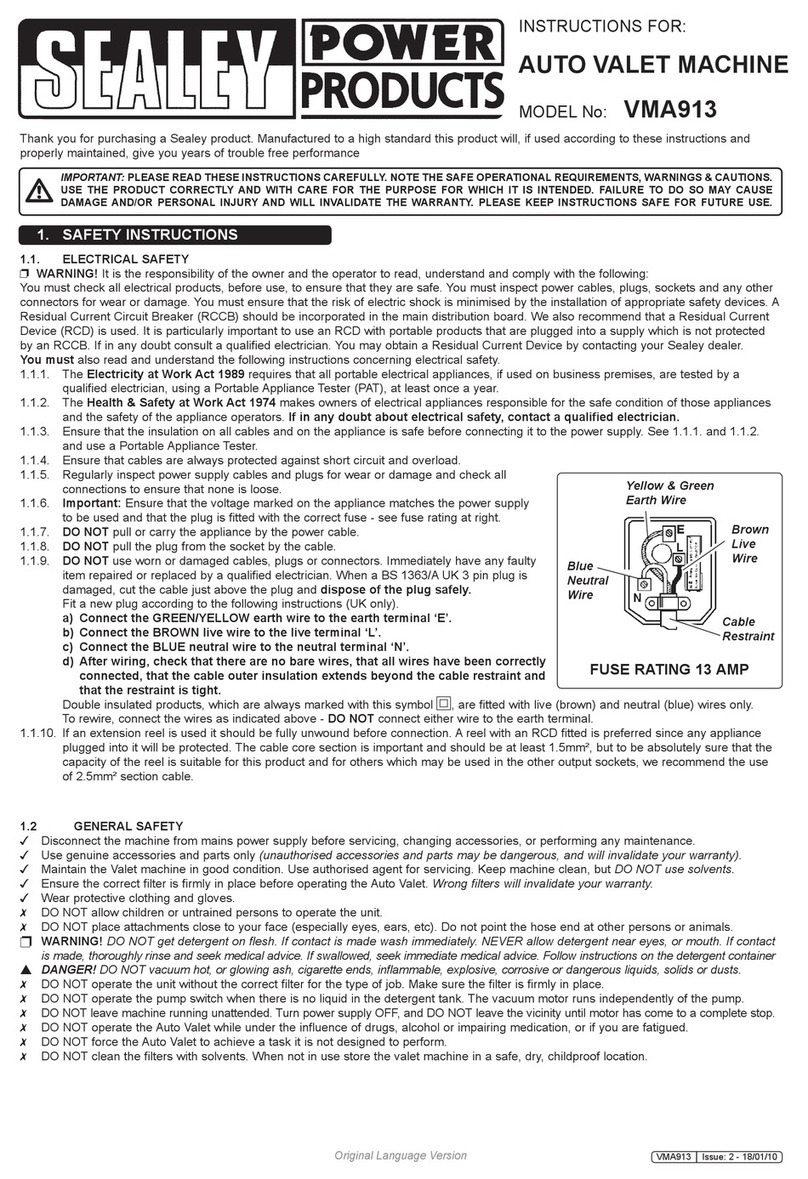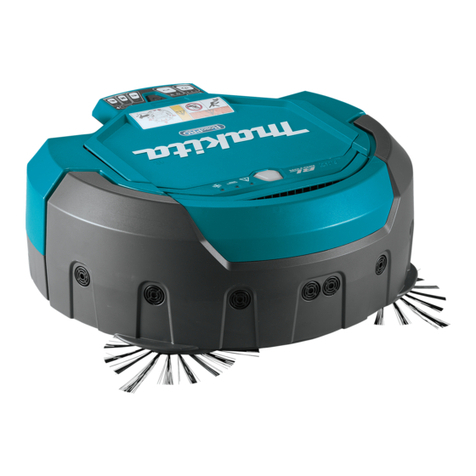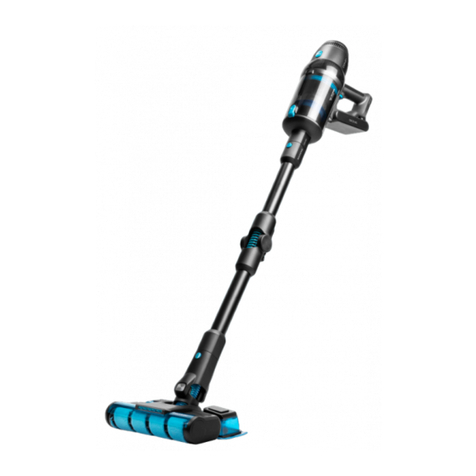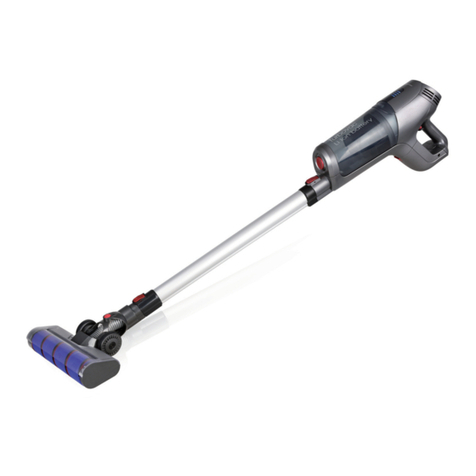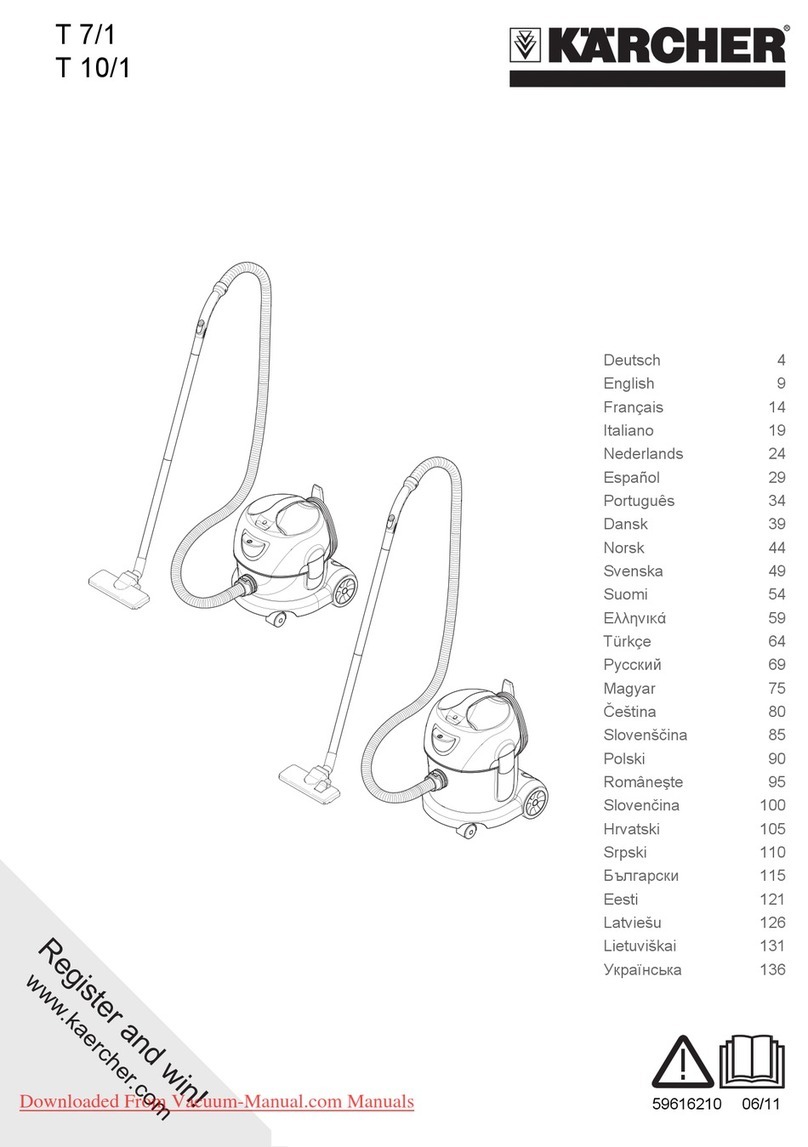ROKAMAT RVC-L User manual

1) Rokamat RVC-L (22RS1180)
2) 2014/30/EU, 2006/42/EG, 2012/19/EU, 2011/65/EU,
2001/95/EG, EG No. 1907/2006
3) EN 60335-1:2012 + AC:2014 + A11:2014 + A13:2017 + A1:2019 + A2:2019
+ A14:2019; EN 60335-2-69:2012
4) Kammerer GmbH | An der B 10 | D-75196 Remchingen
Remchingen, 24.02.2022
Beate Kammerer
Head of Technical Documentation
EN
Original Instructions
3
RVC-L
Art.-Nr. 10000
© Kammerer GmbH. Printed in Germany. Abbildungen unverbindlich.
Technische Änderungen vorbehalten. BA_RVC-L_EN_001
ROKAMAT
Kammerer GmbH
An der B 10
75196 Remchingen
Deutschland
www.rokamat.com

RVC-L
2
[1]
3-1
1-1
1-5
1-7
1-8
1-9
1-10
I
0
[4]
[2]
[3]
1-2
[5]
[6]
5-1
[7]
7-1
5-5
1-3
1-6
5-2
5-3
5-6
5-8
5-7
1-4
5-4
6-1
7-1
7-2
7-3
7-5
7-6
7-8
7-7
7-9
7-11
7-10
7-4

RVC-L en English
3
1. Symbols ......................................................................... 3
2. Safety Instructions .................................................... 3
3. Intended Use ................................................................4
4. Technical Specifications ..........................................4
5. Device Components...................................................4
6. Commissioning............................................................4
7. Instructions for Use...................................................4
8. Maintenance and Care.............................................. 5
9. Spare Parts and Accessories.................................. 5
10. Environmental Protection....................................... 6
11. Declaration of Conformity....................................... 6
12. Troubleshooting ......................................................... 6
For your own protection and for the protec-
tion of your power tool, pay attention to all
parts of the text that are marked with this
symbol!
Risk of electric shock!
Read operating instructions and safety no-
tices! *)
Disconnect from the power supply!
Do not dispose of as domestic waste! *)
Dust class L*)
Warning! The device may contain hazard-
ous dust!
Important advice/information
Safety class I *)
~ Alternating current *)
Confirms the conformity of the power tool
with the directives of the European Com-
munity. *)
Confirms the conformity of the power tool
with UK legislation. *)
*)These symbols are (also) on the device.
For your safety
Read all safety warnings and instructions.
Failure to follow all safety warnings and in-
structions may result in electric shock, fire
and/or serious injury.
Do not use this power tool before you have
thoroughly read and completely understood
this Instruction Manual.
Keep all safety instructions and information for
future reference. Pass on your power tool only to-
gether with these documents.
Please also observe the relevant national indus-
trial safety regulations.
General safety instructions for dry vacuum
cleaners:
WARNING! The device is only intended for dry
cleaning. Don’t use the device outdoors during wet
conditions. The device is not suitable for wet clean-
ing or for extracting wet materials/liquids.
Risk of asphyxiation! Keep the carry case out of
reach of children. Children may suffocate or be
strangled when playing with the carry case.
Only use the device for its proper use. Consider the
local conditions and beware of third parties, in par-
ticular children, when working with the device.
The device is not intended for use by persons with
restricted physical, sensory or mental abilities or
those lacking in experience and/or lacking in
knowledge. Only people who have been instructed
on how to use the device, or have proven their abil-
ity to operate it, and have been explicitly instructed
to use it, must use the device. Children must not op-
erate the device. Children must be supervised to
prevent them from playing with the appliance.
CAUTION! Safety devices are provided for your own
protection. Never modify or bypass safety device.
Use only identical spare parts for maintenance.
Risk of electric shock
WARNING! Never touch the mains plug and socket
with wet hands.
Only connect the device to an electrical connection
which has been set up by a qualified electrician as
per IEC 60364-1.
Only use the electrical outlet module on the device
for its stated purpose.
Check that the mains connection cable with mains
plug is undamaged each time before using the de-
vice.
Do not damage the power supply and extension ca-
ble by running over it, crushing or yanking it or sim-
ilar. Protect the power supply cable from heat, oil
and sharp edges.
Ensure sufficient cable clearance. Use only exten-
sion cables permitted for outdoor use.
Operation
Risk of explosion! Operation in areas where there
is a risk of explosion is prohibited. Never use the
suction device near gasoline, gas, varnish, adhe-
sives or other highly explosive substances. Certain
substances can form explosive vapors or mixtures
with the suction air due to turbulence and corrode
the materials in use on the device.
Never use the device to vacuum up toxic, carcino-
genic, flammable, or other hazardous materials
such as asbestos, arsenic, barium, beryllium, lead,
pesticides, or other materials hazardous to health.
Observe the safety data sheets of the processed
materials.
Do not attempt to vacuum flammable materials,
fireworks, burning cigarettes, hot ashes, hot metal
shavings, sharp objects such as razor blades, nee-
dles, broken glass, or the like.
Never use the device to vacuum up people or ani-
mals.
Observe the safety instructions in the operating in-
structions.
CAUTION! Check the device and the accessories
each time before operation, in particular the mains
connection and extension cable, to make sure it is
safe and working correctly. Pull out the mains. Plug
in case of any damage and do not use the device.
Never leave the device unattended when it is not
switched off and with the mains plug.
Do not block cooling vents. These vents permit
cooling of the motor. Blockage should be carefully
avoided otherwise the motor will burn out from
lack of ventilation.
Keep proper footing and balance at all times.
Do not fold, tug or step on the hose.
Stop the cleaner immediately if you notice poor
performance or anything abnormal during opera-
tion.
Check damaged parts. Before further use of the
cleaner, a guard or other part that is damaged
should be carefully checked to determine that it
will operate properly and perform its intended
function. Check for alignment of moving parts,
binding of moving parts, breakage of parts, mount-
ing, and any other conditions that may affect its op-
eration. A guard or other part that is damaged
should be properly repaired or replaced by an au-
thorized service center unless otherwise indicated
elsewhere in this instruction manual. Have defec-
tive switches replaced by authorized service cen-
ter. Don’t use the cleaner if switch does not turn it
on and off.
Do not operate the cleaner while under the influ-
ence of drugs or alcohol.
Use extreme caution when cleaning on stairs.
Do not use the cleaner as a stool or work
bench. The device may fall down and may
result in personal injury.
Personal protective equipment
CAUTION! Wear suitable gloves when working with
the device.
Use a dust mask in dusty work conditions.
As a basic rule of safety, use safety goggles or
safety glasses with side shields.
Maintenance
WARNING! Risk of injury, electric shock! Always
disconnect the mains plug from the socket before
performing maintenance work on the device!
CAUTION! Risk of damage to the device! Do not
clean the device with a hose or high-pressure wa-
ter jet Do not attempt to clean the exterior or inte-
rior with benzine, thinner or cleaning chemicals.
Cracks and discoloration may be caused.
Check the plug and the cable regularly and should
either become damaged, in order to avoid a hazard,
have them replaced by an authorized customer
service center.
The fabric filter bag is an optional accessory and
only suitable for polystyrene!
Risk of damage to the device! Never insert the la-
mellar filter when wet.
Device with dust class L
The dusts have occupational exposure limits (OEL)
of < 1 mg/m³. The filter material must be tested for
this vacuum cleaner. The maximum permeability is
1. Symbols
2. Safety Instructions
WARNING!
Contents

RVC-L en English
4
less than 1 %. There are no special disposal regula-
tions.
WARNING! The vacuum cleaner is not approved for
dust class M or H. Corresponding materials must
therefore not be vacuumed!
Do not operate the device without the complete
filtration system. Replace a damaged filter imme-
diately.
Only trained personnel are permitted to use the de-
vice and the substances for which it is to be used,
including the safe procedure for disposing of the
vacuumed material.
An air exchange rate L must be present in the room
when the exhaust gas is returned into the room. To
remain within the required limit values, the volume
flow of returned air must be no greater than 50 %
of the fresh air volume (room volume VRx air ex-
change rate LW). Without special ventilation
measures, the following applies: LW= 1h-1.
Please also observe the relevant national indus-
trial regulations.
This device contains dust that is harmful to your
health. Emptying and maintenance, including re-
moval of the dust bag, may only be performed by
technical specialists wearing suitable personal
protective equipment. Observe the applicable
safety instructions for the materials being handled.
For servicing performed by the user, the device
must be disassembled, cleaned and maintained
only to the degree that this is possible without pre-
senting a danger to the maintenance personnel and
other persons. Suitable precautionary measures
include detoxification before disassembly. Make
provisions for local forced ventilation at the loca-
tion where the device is to be disassembled, for
cleaning the maintenance surface and to ensure
adequate protection for the personnel.
All contaminated objects resulting from mainte-
nance and repair work that cannot be satisfactorily
cleaned must be correctly disposed of. Such objects
must be disposed of in sealed bags in accordance
with the applicable regulations for the disposal of
this type of waste.
Emission levels
NOTE! Values for the A-weighted sound pressure
level and for the total vibration values can be found
in the “Technical specifications” table in chapter 4.
The vibration emission level given in this infor-
mation sheet has been measured in accordance
with a standardized test and may be used to
compare one tool with another. It may be used for
a preliminary assessment of exposure.
The RVC-L rucksack vacuum cleaner is intended for
vacuuming dry and non-flammable dusts indoors
and outdoors. It is suitable for the collection of dust
of dust class L, which is harmful to health. This de-
vice is suitable for commercial use, e. g. in con-
struction sites, hotels, schools, hospitals, factories,
stores and offices. The additional appliance
socket-outlet on the vacuum cleaner is intended
for connecting a power tool. The RVC-L is suitable
both as a vacuum cleaner for sucking up dust and
as a dust extractor in combination with a dust gen-
erating machine. The usage height of the backpack
vacuum cleaner is limited to 2,000 m.
Only sufficiently qualified and trained personnel is
allowed to work with the vacuum cleaner. The in-
tended use includes the observance of the operat-
ing instructions, in particular the safety instruc-
tions and the observance of generally recognized
accident prevention regulations.
Rucksack vacuum cleaner RVC-L
Item No. 10000/10000-CH
Rated voltage
230 V AC
Frequency
50 Hz
Power
1100 W
Negative pressure
190 hPa
Air flow
216 m3/h
Max. power at the socket
2400 W
Filter bag capacity
15 l
Total weight
7,0 kg
Dimension compact
(LxHxW)
630x430x200 mm
Cable length
3,7 m
Dust class
L
Safety class
I /
A-weighted sound pressure level (see cap. 2
“Emission levels“):
Sound pressure level LpA
75 dB(A)
Sound power level LWA
78 dB(A)
Uncertainty KpA, KWA
2,5 dB
Total vibration value (see cap. 2 “Emission lev-
els “):
Emission value ah
<2,5 m/s2
Uncertainty K
1,5 m/s2
The specified illustrations can be found in fig. [1]
on page 2 of the operating instructions.
1-1 Upper part
1-2 Clamp
1-3 Handle
1-4 Flange with elbow fitting
1-5 Suction hose
1-6 Socket pipe
1-7 Belt
1-8 Switch
1-9 Socket-outlet
1-10 Mains cable
Unauthorized voltage or frequency!
Risk of accident!
The mains voltage and the frequency of the
power source must correspond with the specifi-
cations on the device's name plate.
Only connect the tool to a grounded power sup-
ply.
Adjusting the shoulder belt [2]
Put the device on its back and then adjust it to the
body by pulling on the centre straps. Do not put on
too tight.
Switching the device on and off [4]
Switching on: Set switch [1-3] to position I.
Switching off: Set switch [1-3] to position 0.
Risk of injury, electric shock!
Always pull the mains plug out of the socket be-
fore performing any type of work on the device!
Risk of damage to the device!
Do not place the device on the floor during oper-
ation! Only carry it on your back.
Danger due to technical defect!
Switch off the motor immediately if the vacuum-
ing performance decreases.
Connecting the tool
Push the socket pipe [1-6] onto the intake socket of
the corresponding tool. Check for correct fit!
The socket pipe is suitable for Ø40mm intake
sockets. For smaller diameters, use the appro-
priate adapter [7-4].
Using the socket on the vacuum cleaner [3]
Risk of damage to the device!
As soon as the switch of the vacuum cleaner is
actuated, voltage is also present at the socket!
Limited power output! Risk of accident!
The socket is designed for a maximum power of
2400 watts!
Fold up the cover of the socket [3-1] and insert the
power plug of the corresponding tool.
Using as a cleaner [7]
If you want to use this product as a cleaner, follow
the below procedures.
Before switching on the power tool: Unpack
rucksack vacuum cleaner and accessories and
check that no parts are missing or damaged.
Always use the vacuum cleaner with the fil-
ters (lamellar filter and filter bag) properly in-
stalled! Do not use a damaged filter bag. Other-
wise the vacuumed dust
or particles may be exhausted from the cleaner
and they may cause respiratory disease to the
operator.
6. Commissioning
7. Instructions for Use
4. Technical Specifications
5. Device Components
3. Intended Use
WARNING!
WARNING!
WARNING!
ADVICE!
CAUTION!
CAUTION!
CAUTION!

RVC-L en English
5
Suction hose 2.0 m [7-1]
Replace the suction hose [1-5] with the suction
hose 2.0 m [7-1].
Socket [7-2]
The suction flow can be regulated on the handpiece
by opening the slider.
Completely open = min. suction flow
Completely closed = max. suction flow
Tubes [7-3]
If necessary, for extension, insert the two tubes
[7-3] into each other by turning them simultane-
ously and then push them onto the handpiece [7-2]
by turning them simultaneously.
Adapter [7-4]
If suction hoses with a smaller diameter are used,
push the adapter [7-4] onto the handpiece [7-2] or
the tube [7-3] by simultaneously turning it.
Upholstery tool [7-5]
To clean textiles, push the upholstery tool [7-5]
onto the handpiece [7-2] or the tube [7-3] by simul-
taneously turning it.
Crevice tool [7-6]
To clean joints or crevices, push the crevice tool
[7-6] onto the handpiece [7-2] or the tube [7-3] by
simultaneously turning it.
Dusting brush [7-7]
To clean sensitive surfaces such as furniture or fit-
tings in the car, push the suction brush onto the
handpiece [7-2] or the tube [7-3]. The brush head
can be rotated 360°.
Radiator brush/crevice brush [7-8]
To clean radiators or other robust and hard-to-
reach objects, push the radiator brush [7-8] onto
the already pre-mounted crevice nozzle [7-6].
Turbo brush [7-9]
To clean textile wall and floor coverings and uphol-
stery, push the turbo brush [7-9] onto the hand-
piece [7-2] or the tube [7-3] by simultaneously
turning it. The suction head is movable.
Suction nozzle [7-10]
For cleaning large surfaces, push the suction noz-
zle [7-9] onto the handpiece [7-2] or the tube [7-3]
by simultaneously turning it. Depending on the
surface, operate the toggle lever. The suction head
is movable.
Floor upholstery nozzle [7-11]
For cleaning large areas of upholstered floors,
push the floor upholstery nozzle [7-11] onto the
handpiece [7-2] or the tube [7-3] by simultaneously
turning it. The floor upholstery nozzle can be addi-
tionally fixed by the screw connection at the upper
end. The suction head is movable.
Handle [1]
Always use the handle [1-3] to transport the suc-
tion unit main part.
- Repairs may be carried out by an authorized cus-
tomer service center only.
- Repairs to electrical tools must be carried out by
qualified electricians only!
- Pay attention to the safety inspection for mobile
devices for industrial use in accordance with the
locally applicable regulations.
Check the plug and the cable regularly and should
either become damaged, in order to avoid a hazard,
have them replaced by an authorized customer
service center.
Clean the device, accessories and mains cable after
use with clean with a damp cloth.
During the warranty period do not loosen the
screws on the housing. Non-compliance will deem
the guarantee obligations of the manufacturer null
and void.
At least once a year, the manufacturer or an in-
structed person must perform a technical inspec-
tion including filters, air tightness of the vacuum
cleaner, and control mechanisms.
Paper filter bags [5]
When the paper filter bag [5-1] is already full, re-
place with new one. Continuous use with the pa-
per filter bag full results in reduced suction
power.
Replacement
-Remove the upper part [1-1] by lifting the clamps
[1-2].
-Pull off the paper filter bag [5-1] from the flange
[5-8] at the reinforced point.
-Fit a new paper filter bag [5-1] onto the flange
[5-8]. Check for correct fit/tightness!
-Replace the upper part [1-1] and engage the
clamps [1-2]. Make sure that the paper filter bag
[5-1] is not jammed anywhere.
Fabric filter bag [6]
Risk of damage to the device!
The fabric filter bag is an optional accessory and
only suitable for polystyrene!
When the paper fabric filter bag [6-1] is already
full, replace with new one. Continuous use with
the paper filter bag full results in reduced suc-
tion power.
Emptying
The fabric filter bag is equipped with a zipper.
When this is opened, the contents can be emptied.
Then close the zipper again.
Replacement
-Remove the upper part [1-1] by lifting the clamps
[1-2].
-Pull the fabric filter bag [6-1] off the flange [5-8]
at the fabric filter attachment in the direction of
the handle.
-Push on new fabric filter bag [6-1] parallel to the
flange [5-8]. Check correct fit/tightness!
-Replace the upper part [1-1] and engage the
clamps [1-2]. Make sure that the fabric filter bag
[6-1] is not jammed anywhere.
Lamellar filter [5]
To keep optimum suction power and clean ex-
haust, clean the lamellar filter [5-2] periodically.
If enough suction power is not obtained even af-
ter the cleaning, replace the filter with new one.
Cleaning
If necessary, remove the lamellar filter (see “Re-
placement”), clean it under running water and dry.
Replacement
-Remove the upper part [1-1].
-Loosen the knurled nut [5-5] and remove it to-
gether with the rubber washer [5-6] and the cov-
ering for lamellar filter [5-7].
-Remove the lamellar filter [5-2] from the motor
cap [5-3].
Insert the new lamellar filter in reverse order.
Remove dust from the motor regularly
It is possible that particles deposit inside the device
during operation. This impairs the cooling of the de-
vice. Conductive build-up can impair the protective
insulation of the power tool and cause electrical
hazards.
The vacuum unit should be cleaned regularly, often
and thoroughly through all of the motor hood [5-3]
and the vacuum cleaner base [5-4] using a vacuum
cleaner or by blowing in dry air. Prior to this opera-
tion, separate the power tool from the power
source and wear protective glasses and dust mask.
Environmental conditions
Operation
Temperature range: +5° C to +50° C
Humidity: ≤ 85 %, non-condensing
Climate: dry
Transport and storage
Temperature range: -5° C to +55° C
Humidity: 0 % to 70 %
Climate: dry, roofed, dew protected
Risk of injury, electric shock!
Always disconnect the mains plug from the
socket before performing maintenance work on
the device!
Risk of damage to the device!
Do not clean the device with a hose or high-
pressure water jet.
Never use gasoline, benzine, thinner, alcohol or
the like. Discoloration, deformation or cracks
may result.
Check all wearing parts once a month.
Risk of damage to the device!
Never insert the lamellar filter when wet.
8. Maintenance and Care
WARNING!
ADVICE!
ADVICE!
CAUTION!
ADVICE!
CAUTION!
WARNING!

RVC-L en English
6
Accessories can be found in the manufacturer’s
catalogues. Exploded drawings and spare-part
lists can be found on our homepage: www.roka-
mat.com.
Use only original ROKAMAT spare parts and ac-
cessories!
The vacuumed dust may contain harmful sub-
stances. Dispose appropriately.
Observe national regulations on environmentally
compatible disposal and on the recycling of dis-
used machines, packaging and accessories.
For Great Britain and EU countries: Do not
dispose of electric equipment or battery
pack together with household waste mate-
rial! In observance of the European Direc-
tives, on Waste Electric and Electronic-
Equipment and Batteries and Accumulators
and Waste Batteries and Accumulators and
their implementation in accordance with
national laws, electric equipment and bat-
teries and battery pack(s) that have
reached the end of their life must be col-
lected separately and returned to an envi-
ronmentally compatible recycling facility.
Please ask your dealer about disposal options!
It is expressly declared that the rucksack vacuum
cleaner and dust extractor listed on the first page
under 1) from the serial number indicated onwards
complies with all relevant provisions of the direc-
tives or regulations listed in 2) and that the harmo-
nized standards listed in 3) have been applied. The
technical documentation is available from the au-
thorized documentation agent named in 4).
Problem
Possible causes
Remedy
The motor thermo-protector
has triggered. Motor
switches off due to overheat-
ing.
Paper filter bag/fabric filter bag* full.
Replace paper filter bag or empty fabric fil-
ter bag*. Allow the device to cool down.
Lamellar filter blocked.
Clean or replace lamellar filter. Allow the
unit to cool down.
No, insufficient or decreasing
extraction power.
Suction tube, suction hose or suction
nozzle blocked.
Remove blockages from suction tube, suc-
tion hose or suction nozzle.
Suction hose kinked.
Remove kinks.
Suction hose defective.
Replace defective suction hose.
Speed at the connected tool too high.
Reduce speed at connected tool.
Paper filter bag/fabric filter bag* full.
Replace paper filter bag or empty fabric fil-
ter bag*.
Lamellar filter blocked.
Clean or replace lamellar filter.
Upper part opened.
Close upper part correctly.
Motor power fluctuates.
Carbon brushes worn.
Replace carbon brushes.
RVC-L not working.
No power supply.
Supply the power to the tool and the
cleaner.
Cable break.
Replace mains plug.
The restart protection is active.
Switch the vacuum cleaner off and on
again.
Dust leakage during
vacuuming.
Paper filter bag or fabric filter bag*
defective.
Replace defective paper filter bag or fabric
filter bag*.
Paper filter bag/fabric filter bag* in-
serted incorrectly.
Check the fit of the paper filter bag/fabric
filter bag*.
Upper part opened.
Close the upper part correctly.
9. Spare Parts and Accessories
10. Environmental Protection
ADVICE!
11. Declaration of Conformity
12. Troubleshooting
* Special accessories
If problems other than those listed occur, please contact your ROKAMAT service workshop or your local
specialist dealer.
Li-Ion
This manual suits for next models
1
Table of contents
Other ROKAMAT Vacuum Cleaner manuals
Popular Vacuum Cleaner manuals by other brands
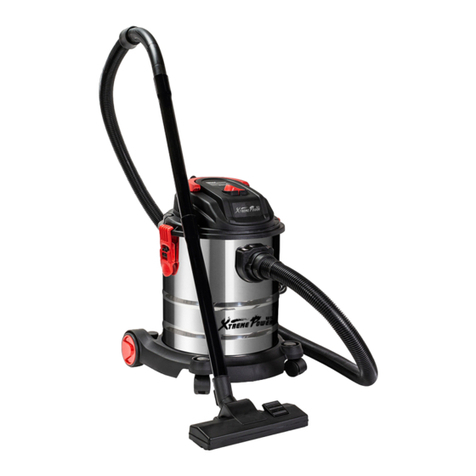
XtremepowerUS
XtremepowerUS 71011 Owner's manual and safety instructions
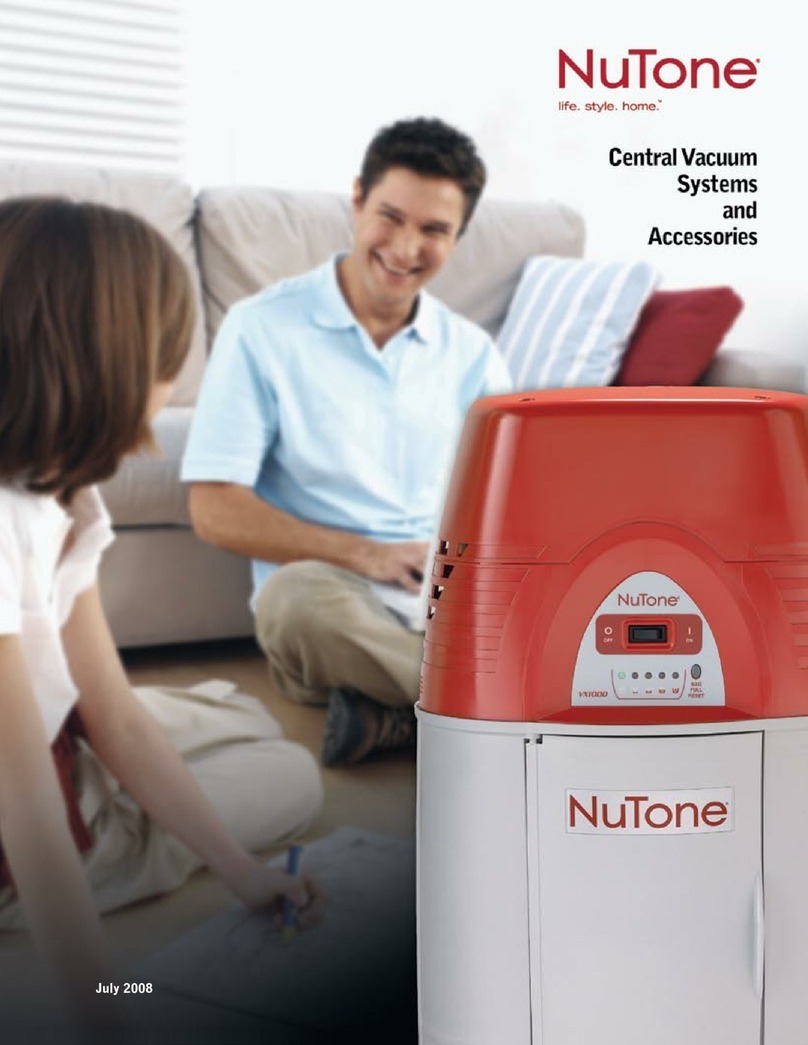
NuTone
NuTone CH515 brochure
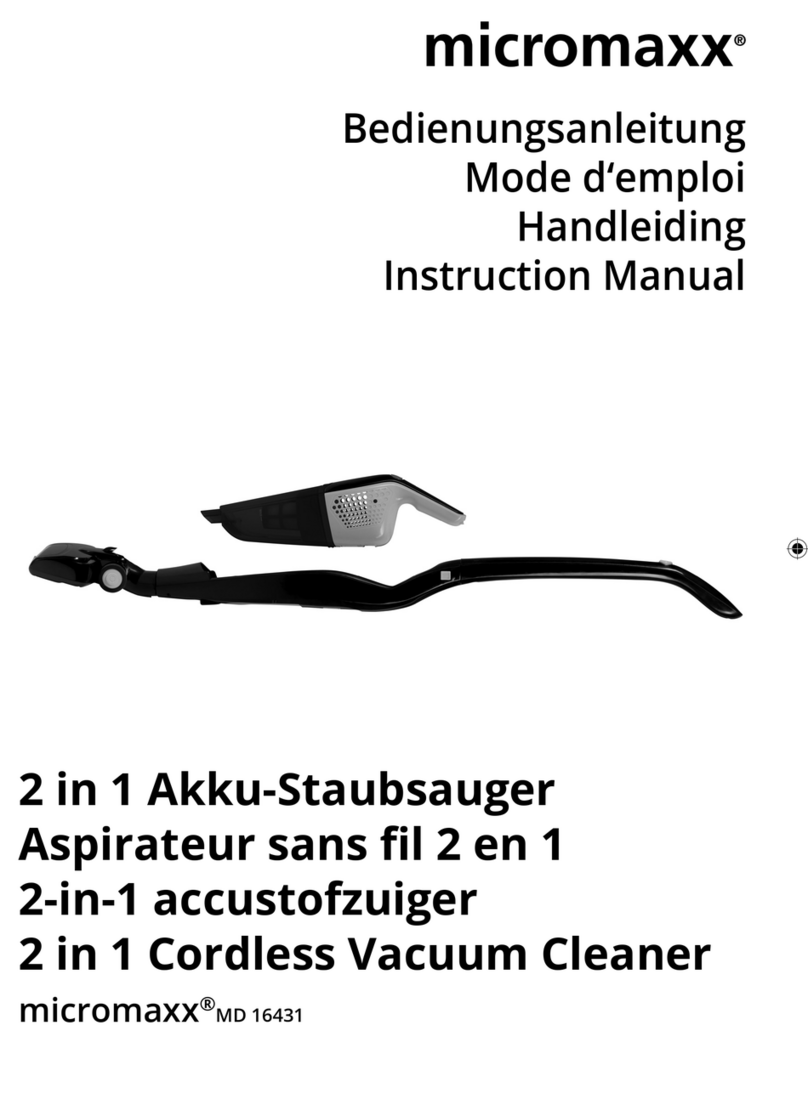
Medion
Medion micromaxx MD 16431 instruction manual
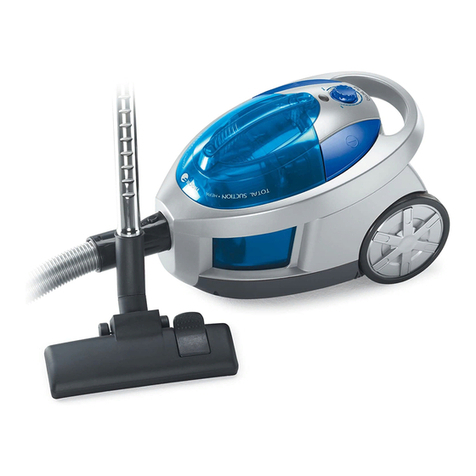
Fagor
Fagor VCE-307 Instructions for use
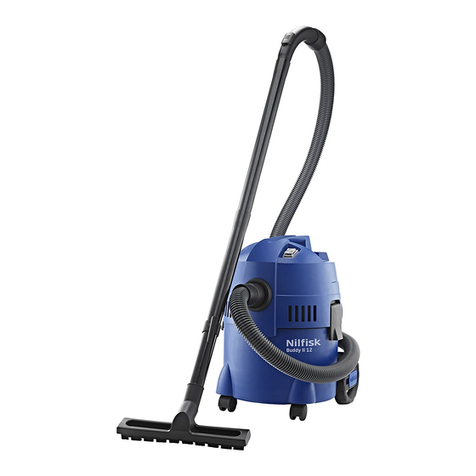
Nilfisk-Advance
Nilfisk-Advance Buddy II Series Instructions for use
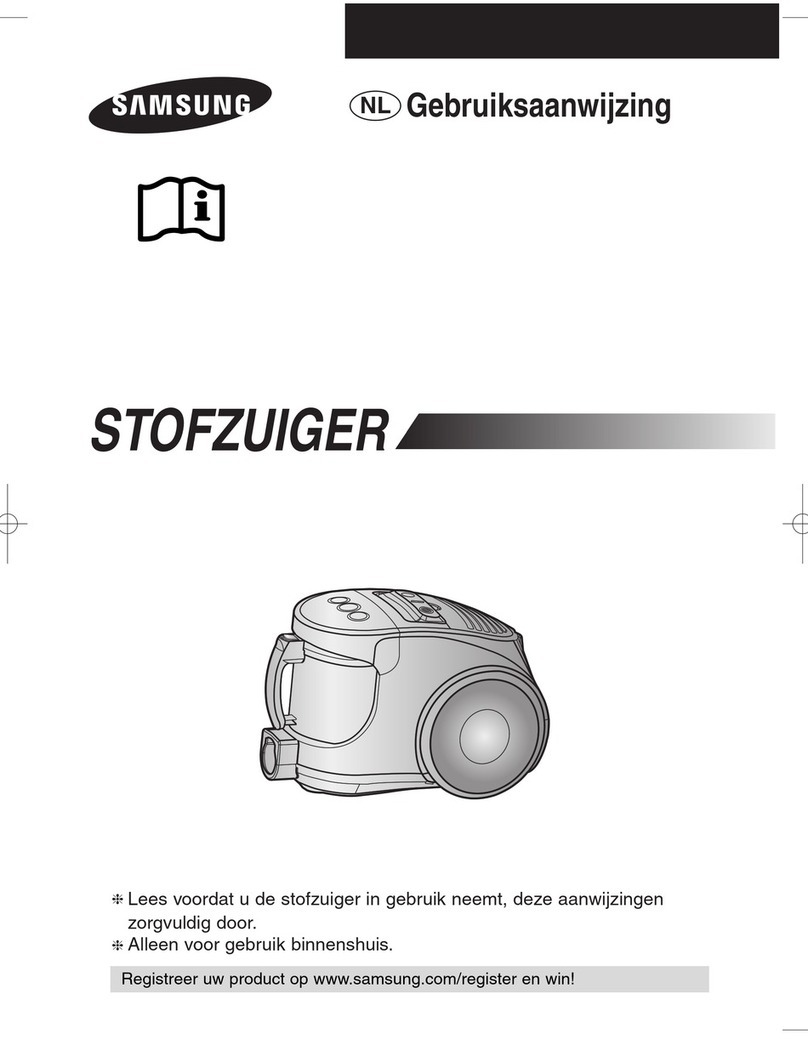
Samsung
Samsung DJ68-00321K operating instructions

